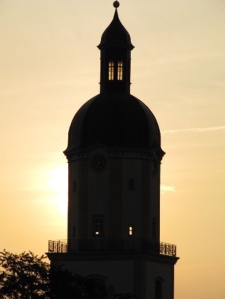Tags
Allein Gott in der Höh’ sei Ehr’, Bachfest Leipzig, Bachtage Ohrdruf, Buchenwald, concentration camp, German Democratic Republic, Johann Ludwig Bach, Missa brevis, Ohrdruf, organ, Second World War, Soviet Army, St. Michael Church, Thuringia, Trinity Church
 Because Bach worshipped at St. Michael Church in Ohrdruf, as did more than one hundred other members of the Bach family, this small Thuringian town is of interest to music lovers. All that remains today of the church known by the newly orphaned Johann Sebastian, however, is the fifteenth-century stone base of its tower, and it’s remarkable that those blocks weren’t reused in other buildings as for the past sixty years the town has struggled to recover from its ignominious role as an extension of the Buchenwald concentration camp during the Second World War.
Because Bach worshipped at St. Michael Church in Ohrdruf, as did more than one hundred other members of the Bach family, this small Thuringian town is of interest to music lovers. All that remains today of the church known by the newly orphaned Johann Sebastian, however, is the fifteenth-century stone base of its tower, and it’s remarkable that those blocks weren’t reused in other buildings as for the past sixty years the town has struggled to recover from its ignominious role as an extension of the Buchenwald concentration camp during the Second World War.
The origins of St. Michael Church date back to the eighth century when the missionary Boniface first erected a small chapel on the spot. Again and again, as larger churches replaced earlier structures destroyed by fire, St. Michael continued to grow in size until the bomb attacks of 1945, the establishment of policies against religion by the German Democratic Republic and the influx of refugees with different faiths caused the will of the people to rebuild the church to gradually fade. With the departure of the Soviet Army from their town, however, the citizens of Ohrdruf banded together and restored the historic tower of St. Michael to its original height as proof of their municipal pride and eagerness to create a positive future.
Further evidence of Ohrdruf’s optimism is the recent foundation of the Bachtage Ohrdruf music festival. In the week following this year’s Bachfest Leipzig, organ concerts and a performance of the Missa brevis ”Allein Gott in der Höh’ sei Ehr’” by Johann Ludwig Bach will be presented in Ohrdruf’s eighteenth-century Trinity Church.

Pingback: Duo Crezdi to Appear in Recital |
Pingback: Bach’s Troubled Youth | Boulder Bach Beat